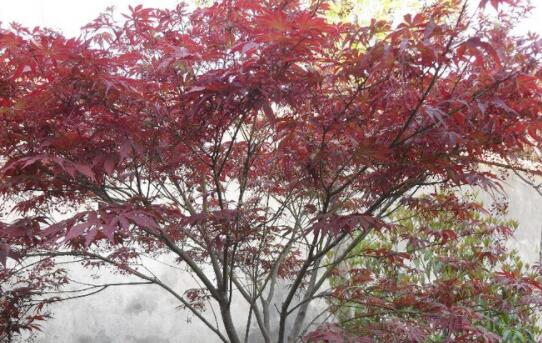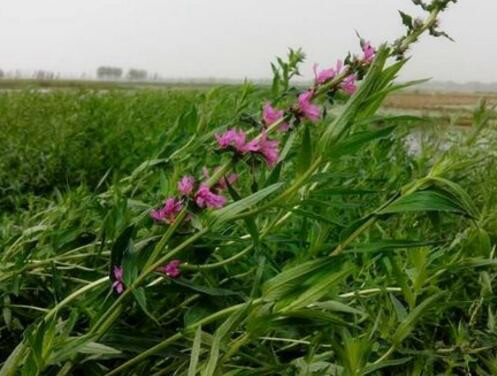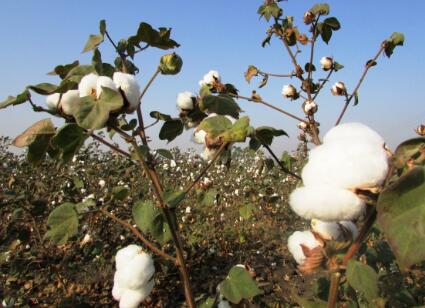When do small trees usually bloom? How long is the flowering period? How much does a seedling cost? planting method
Purple leaf plum alias red leaf plum, cherry plum, Rosaceae plum is a deciduous small tree, up to 8 meters high, native to southwest Asia, perennial purplish red leaves, famous foliage tree species. When does the purple leaf plum usually bloom? How long is the florescence? How much is the seedling price? What are the planting methods? According to the senior manager of Jiujiang Seedling Company, the current price of 8 cm purple leaf plum is about 280 yuan, with a height of 3.6 meters and a crown width of about 2.5 meters.

When do purple leaf plums usually blossom? How long is the florescence?
1. Purple leaf plum is one of the more famous foliage plants, and its purplish red leaves are the most eye-catching. It is a very excellent flowering plant in landscaping, its flowers are beautiful, and its flowering period is mainly in spring. When the purple leaf plum blossoms, the flowers are white in the powder and give off a slight fragrance. Its flowers will also fall like cherry blossoms, when the petals fall, it is like snow all over the sky, beautiful.
2. The flowering period of purple leaf plum is April and the fruiting period is August. Purple leaf plum flower 1, sparse 2; pedicel 1-2.2 cm long. Glabrous or minutely pubescent; flowers 2-2.5 cm in diameter; calyx tube campanulate, sepals long-ovate, apex obtuse, margin sparsely serrate, nearly as long as sepals, calyx tube and sepals glabrous outside, calyx tube inner surface sparsely pubescent; petals white, oblong or spatulate, margin undulate, base cuneate, inserted at margin of calyx tube; stamens 25-30, filaments varying in length, closely arranged in irregular 2 whorls, slightly shorter than petals. Pistil 1, carpels villous, stigma discoid, style slightly longer than stamens, base sparsely villous.
3. The flowering period of purple leaf plum is from early April to early May, but the florescence is usually about 10-15 days, which is not long. The flowering is from south to north according to the geographical location, and the flowering period is different in different parts of the country.
What are the planting methods of purple leaf plum?
I. Seedling raising techniques
The seed of purple leaf plum is not easy to be collected, and cutting is a common method. Choose the sandy loam with flat terrain and deep soil layer as the seedbed. After applying organic fertilizer on the surface of the bed, rake it out and then disinfect the soil.
The main results are as follows: (1) on the adult trees with strong growth and no diseases and insect pests, the 1-2-year-old sprouts with good Lignification and full bud eyes are selected and cut into 10-16-year-old cuttings, then they are soaked with rooting powder, and then they can be cut.
(2) cutting before and after cutting the Autumn Equinox is the most suitable, which is easy to maintain moisture and is beneficial to healing and rooting. On the whole seedling bed, the cuttings were cut according to the row spacing of 15 × 25 or 5 × 8, the depth of the cuttings was 3 × 4, the buds were exposed, and the soil was firm at last.
(3) watering immediately after the management of cutting, and setting up a plastic arch shed on the seedling bed, the height of the shed is 50 ~ 80 ℃. When the temperature in the shed reaches 30 ℃, the shed is ventilated. Cover with grass curtains before winter to prevent frost damage. In March of the following year, purple leaf plums germinate and take root with the increase of temperature. We should pay attention to ventilation, loosen the soil and weed in time, fertilize and irrigate. Foliar fertilizer is sprayed every 15 days or so, nitrogen fertilizer is applied once every two months and water is thoroughly watered. The large seedlings for landscaping can be transferred to another bed, the row spacing is 40 × 50 cm, and the height of seedlings can reach 2 × 3 m after two years of cultivation. The height of the fixed stem should be about 1.5m and sprout from the branches.
II. Planting techniques
Purple leaf plums can generally be planted in courtyards, squares, lawns, streets and roads and near buildings. When the seedling is more than two meters, dig a hole of 80 × 60 × 40, transplant the seedling with soil, keep the seedling root intact and moist, and water once immediately after planting. After 2 or 3 years of planting, the inner bore branches, upper competitive branches and disease and insect branches can be trimmed in order to keep the crown compact and symmetrical.
Time: 2019-03-19 Click:
- Prev

In which month does it blossom? How to plant it? How do you eat it? What are the effects and effects?
It is grown all over China and is also cultivated in Algeria, North America and southeastern Australia in Asia, Europe, Africa and Algeria. It has high edible and medicinal value. So, in which month will it blossom? How to plant it? How do you eat it? What are the effects and effects? How many months is it in blossom?
- Next

How to grow cotton? What are the high-yield technologies?
Cotton is an annual herb of cotton genus of Malvaceae, and it is one of the most important cash crops in the world. Cotton planting has a high planting value, so how to grow cotton? The following is to introduce the high-yield planting techniques of cotton, let's learn about it. Planting conditions of cotton
Related
- Fuxing push coffee new agricultural production and marketing class: lack of small-scale processing plants
- Jujube rice field leisure farm deep ploughing Yilan for five years to create a space for organic food and play
- Nongyu Farm-A trial of organic papaya for brave women with advanced technology
- Four points for attention in the prevention and control of diseases and insect pests of edible fungi
- How to add nutrient solution to Edible Fungi
- Is there any good way to control edible fungus mites?
- Open Inoculation Technology of Edible Fungi
- Is there any clever way to use fertilizer for edible fungus in winter?
- What agents are used to kill the pathogens of edible fungi in the mushroom shed?
- Rapid drying of Edible Fungi

